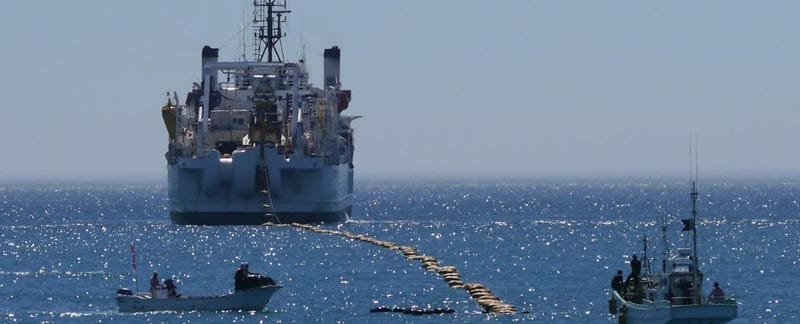A mere 9,000 KILOMETERS at 60TBPS connection from Japan to the US is now live. Now our Japan Colo loop will have near-timeless connections back to the US.
The new undersea optic cable connecting Japan and the US running from Oregon all the way to the east coast of Japan is now live!
The project, which was first announced in 2014, is the highest-capacity underwater fiber optic cable ever built. It has appropriately been named “FASTER,” and rightly so—the cable will be delivering data across the Pacific at speeds of up to 60 Terabits per second (Tbps). “From the very beginning of the project, we repeatedly said to each other, ‘faster, Faster and FASTER’, and at one point it became the project name, and today it has become a reality,” said Hiromitsu Todokoro, chairman of the FASTER management committee.
Google is being allocated 10Tbps of this bandwidth. “This is especially exciting, as we prepare to launch a new Google Cloud Platform East Asia region in Tokyo later this year,” Google’s Alan Chin-Lun Cheung wrote. “Dedicated bandwidth to this region results in faster data transfers and reduced latency as GCP customers deliver their applications and information to customers around the globe.”
PREPARING FOR THE DATA-HEAVY FUTURE
FASTER hopes to address the increasing broadband traffic between the two continents, which is estimated to get heavier in the future and also aims to cater to other service providers in Asia. It took six companies to make this feat possible: Google, Global Transit, China Telecom Global, Singtel, China Mobile International, and KDDI. Building the cable itself required the services of another party, the Japanese IT company NEC Corporation. “The cable system … will help spur innovation on both sides of the Pacific to stimulate the growth of the digital economy,” said Singtel vice president Ooi Seng Keat.
Long-range undersea cables seem to be turning into the new common and are stretching farther and farther with ever-competing bandwidths, with the recent construction of Facebook and Microsoft’s 4,000-mile cable across the Atlantic, and another two by…yep, Google again.
And at the dawn of the quantum computer age, it seems only fitting that internet service providers get a head start.

